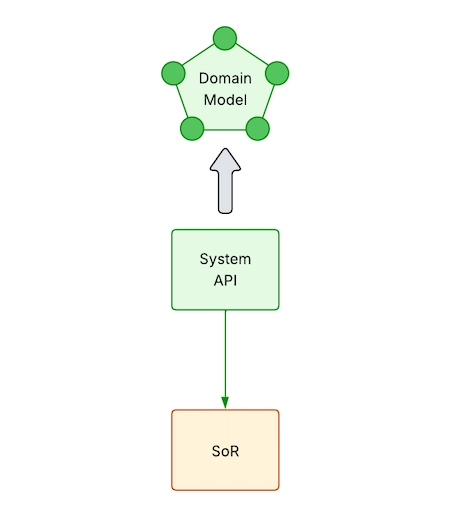Orchestrating Multi-Agent Systems with AWS Bedrock: A Comprehensive Guide
Hello, fellow developers and AI enthusiasts! 👋
Today, I’m excited to dive deep into multi-agent orchestration using AWS Bedrock – a topic that’s generating significant buzz in the AI community. While there are numerous approaches to implementing multi-agent systems, translating these concepts into production-ready solutions presents unique challenges that we’ll address in this article.
Multi-Agent Orchestration: Powerful Use Cases
Multi-agent systems can transform how we build AI solutions by leveraging specialized components working in harmony:
- Domain-Specific Expert Agents: Create agents with deep expertise in finance, healthcare, legal, or technical domains that collaborate to solve complex problems
- Sequential Workflow Processing: Implement step-by-step processing where each agent handles a specific part of a complex task (e.g., one agent extracts data, another analyzes it, and a third generates recommendations)
- Cognitive Diversity: Deploy agents with different reasoning approaches to tackle problems from multiple angles, similar to human team collaboration
- Fallback and Redundancy Systems: Build resilient systems where specialized agents can take over when primary agents fail or encounter edge cases
- Adaptive Customer Support: Route customer inquiries through a network of specialized support agents based on query complexity and domain requirements
Real-World Example: A financial advisory system where one agent specializes in investment analysis, another in tax implications, and a third in regulatory compliance – all orchestrated to provide comprehensive financial guidance.
AWS Bedrock Flow vs. Step Functions: Making the Right Choice
Technical Differences
AWS Bedrock Flow:
- Purpose-built for AI agent orchestration with built-in context management
- Native integration with Bedrock models and agents
- Simplified prompt engineering and agent communication
- Optimized for conversational and generative AI workflows
- Limited to Bedrock ecosystem components
AWS Step Functions:
- General-purpose workflow orchestration service
- Supports integration with virtually any AWS service
- Provides robust error handling and retry mechanisms
- Better suited for complex business processes with diverse service requirements
- Requires custom development for context management between AI components
Cost Considerations
AWS Bedrock Flow:
- Pricing based on the number of orchestration steps executed
- No upfront costs or minimum fees
- More cost-effective for pure AI orchestration scenarios
- Potentially higher costs for complex, long-running workflows
AWS Step Functions:
- Pricing based on state transitions
- More economical for workflows with fewer transitions but complex logic
- Better cost optimization for hybrid workflows combining AI and non-AI services
- Additional savings through Express Workflows for high-volume, short-duration executions
Choose Bedrock Flow for AI-centric orchestration with simpler context management, and Step Functions for complex, hybrid workflows requiring extensive AWS service integration.
Reference Architecture
- AWS Lambda: Powers backend logic processing and API integrations
- Bedrock Agent: Hosts our specialized domain agents with custom knowledge bases
- Bedrock Prompt Management: Intelligently routes user queries to appropriate specialized agents
- Bedrock Flow: Orchestrates the communication flow between agents, maintaining conversation context
The Critical Role of Agents in Bedrock Flow Implementation
Using agents to invoke Bedrock Flow addresses several critical challenges in multi-agent systems:
Session History and Context Management
When orchestrating multiple specialized agents, maintaining conversation context becomes exponentially complex. Each agent interaction builds upon previous exchanges, requiring:
- Unified Context Store: Bedrock Flow maintains a centralized conversation history accessible to all agents, preventing fragmented context
- State Persistence: User session state persists across the entire agent network, ensuring continuity
- Memory Management: The system intelligently manages what information to retain or discard as conversations evolve
- Cross-Agent References: Agents can reference information discovered by other agents without redundant user questioning
Without proper context management, multi-agent systems risk creating disjointed experiences where users must repeatedly provide the same information or where agents contradict each other due to inconsistent context understanding.
Conversation Coherence
Bedrock Flow ensures that despite involving multiple specialized agents, the conversation maintains a natural, coherent flow from the user’s perspective. This prevents the jarring experience of obviously switching between different AI personalities.
Implementation Guide: Build Your Multi-Agent System
Ready to create your own multi-agent orchestration? Follow these steps:
- Access the Project Repository: Clone the code to get started with the foundation
git clone https://github.com/gugamainchein/bedrock-multi-agent-orchestration
cd bedrock-multi-agent-orchestration
-
Customize Your Agents: Personalize each agent based on your specific use case requirements
- Define clear domains of expertise for each agent
- Create specialized knowledge bases
- Configure agent behaviors and response styles
-
Deploy Using Serverless Framework: Set up your infrastructure with minimal effort
npm install -g serverless
sls deploy --stage [your-stage-name]
-
Configure Orchestration Components: Set up the coordination layer
- Create your prompt management router with clear routing rules
- Design your Bedrock Flow to manage agent interactions
- Test the system with various user scenarios to ensure proper routing
By following this approach, you’ll create a sophisticated multi-agent system that leverages the strengths of specialized AI components while maintaining a coherent user experience.
Have you implemented multi-agent systems before? What challenges did you face? I’d love to hear about your experiences in the comments!


